With the flood of online content and advertising, personalization in digital marketing has become one of the best ways to stand out – and convert. Whether you’re in B2B or B2C, your customers will be more likely to buy from you if they feel you’re talking directly to them and know how to solve their problems. But to do personalized marketing right, you need to have the right customer data and a detailed plan how to use it.
Why do you personalize your marketing at all?
Personalization in marketing comes in many shapes and forms, and at different levels of complexity – from using your customer’s first name in email subject lines to location-based display ads to complete, hyper-targeted online advertising strategies.
When you look at the numbers, it’s clear there are two main reasons why brands should seize the opportunities provided by personalized marketing:
-
Most people are ready to share their data if it helps brands to provide them with relevant offers and products,
-
They’re more willing to buy from brands that personalize their offers and ads.
Whatever the form of personalization, it all has to start with one thing: collecting customer data and then using it to segment the audience and customize the communication for each segment.
Depending on the level of personalization, this can be as simple as dividing your audience into men and women to show them relevant products in emails or display ads. Or as complex as taking multiple targeting demographic and behavioral criteria to follow a single website visitor online and display targeted communication along their way, up to the purchase – and beyond.
That’s why you need a personalization strategy to know which data to collect and how to use it to increase digital marketing performance.
Once you have that strategy (and the right, integrated tools like CRM, email and analytics software), you get access to a bewildering range of personalization and targeting possibilities. Let’s look at just a few of them.
Examples of how brands use data to personalize their marketing
Collecting customer data on your website
When you collect the right data on your website, you can immediately personalize your visitor’s experience and get additional targeting options in the long run. This is what subscription brands like Dollar Shave Club are doing. To tailor their subscription to their customers’ needs and recommend the right products upfront, they first ask them some questions in a survey.
Apart from helping them make the right choice and making the buying decision easier, they have data to work with when sending emails or retargeting their ads later on.

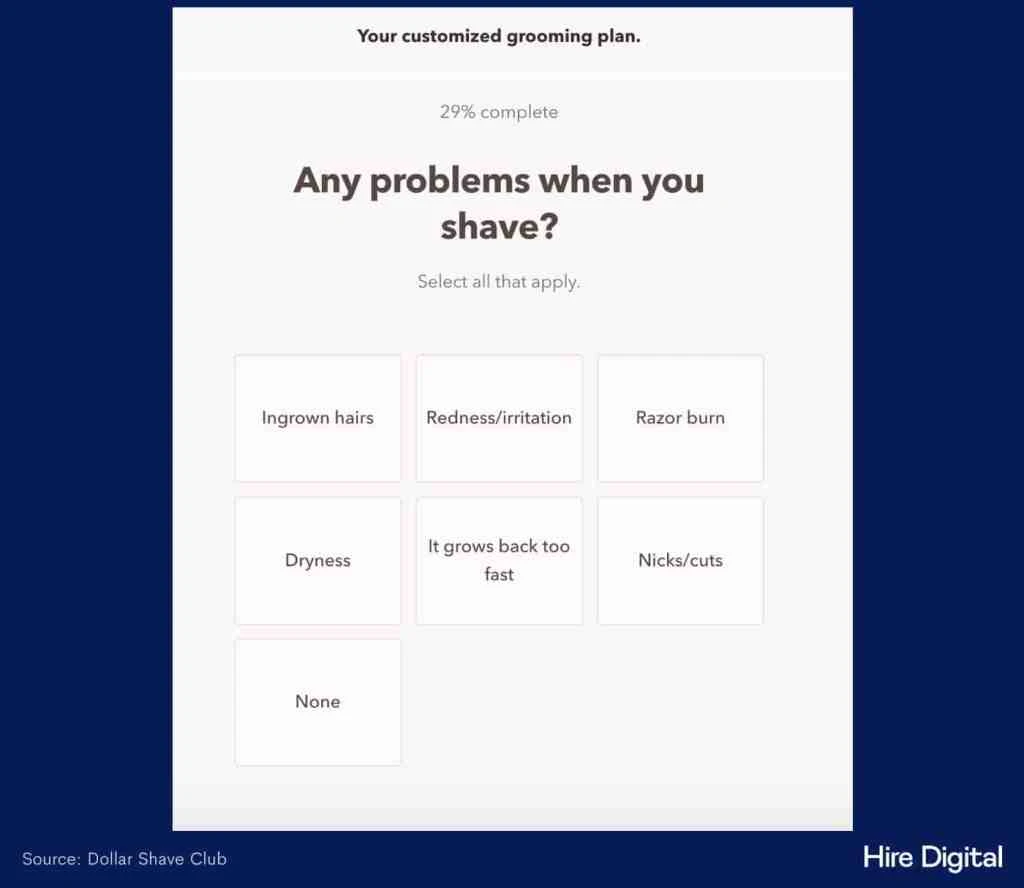
The initial subscription survey on Dollar Shave Club website.
Personalized website content based on geolocation
The most straightforward way to customize website content is to use the visitor’s geolocation to display the website in their language. It’s as simple as using a WordPress plugin like PolyLang (and of course, translating the content.)
But you can go a step further and display different images, offers, or customer stories depending on the language version of your site. This is what Salesforce is doing, customizing their website contents depending on where the visitor’s viewing it, with slightly different headers, but also different below-the-fold content.
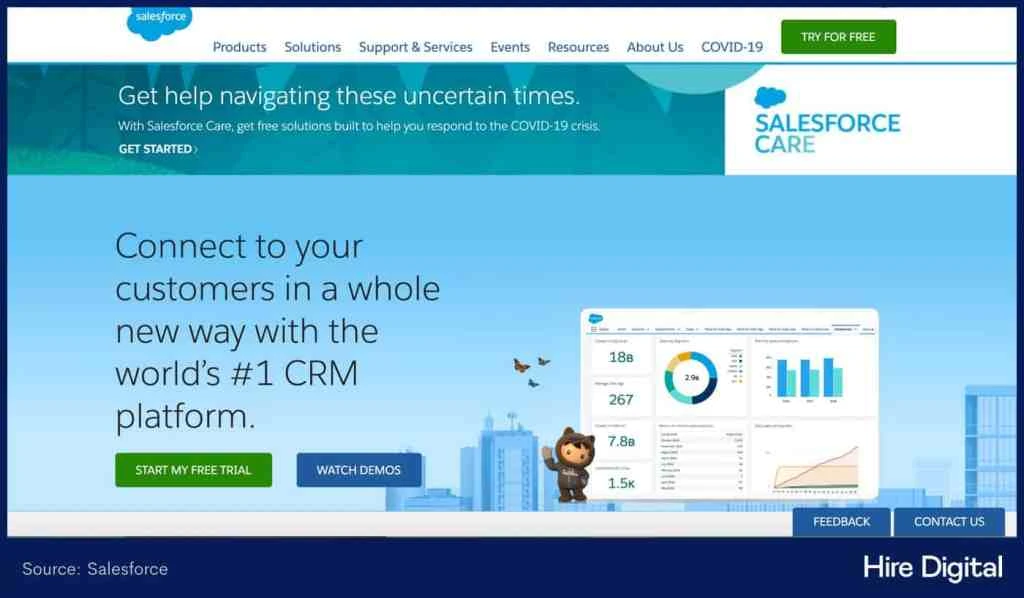
Salesforce UK website header.
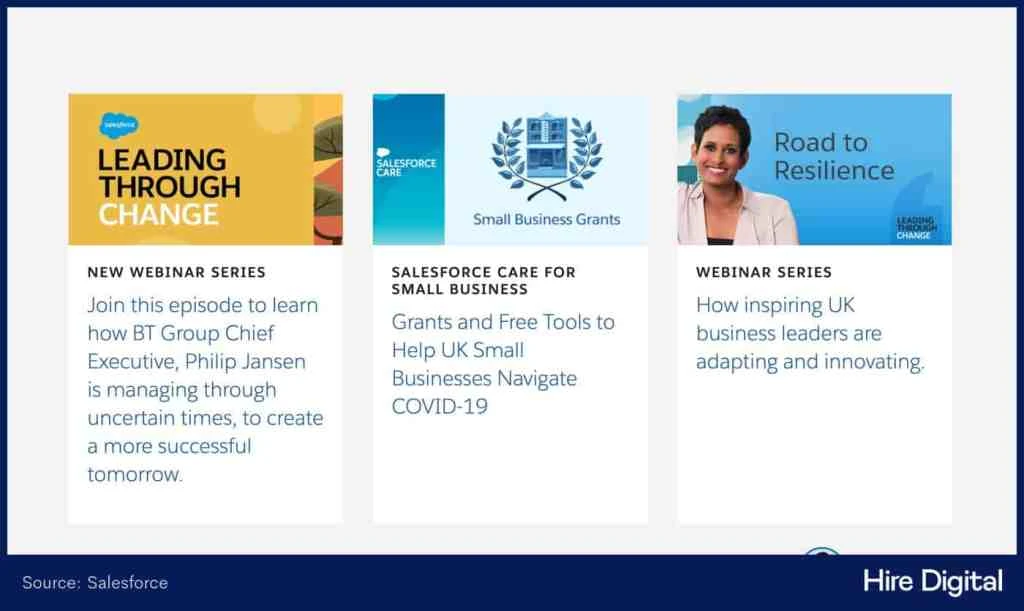
Salesforce UK below-the-fold content.
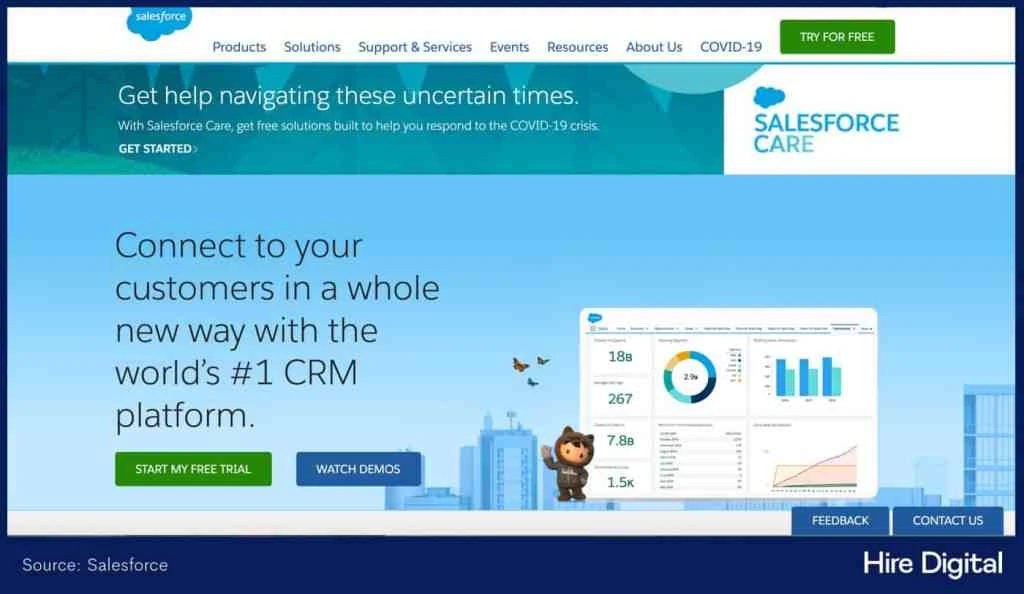
Salesforce US website header.
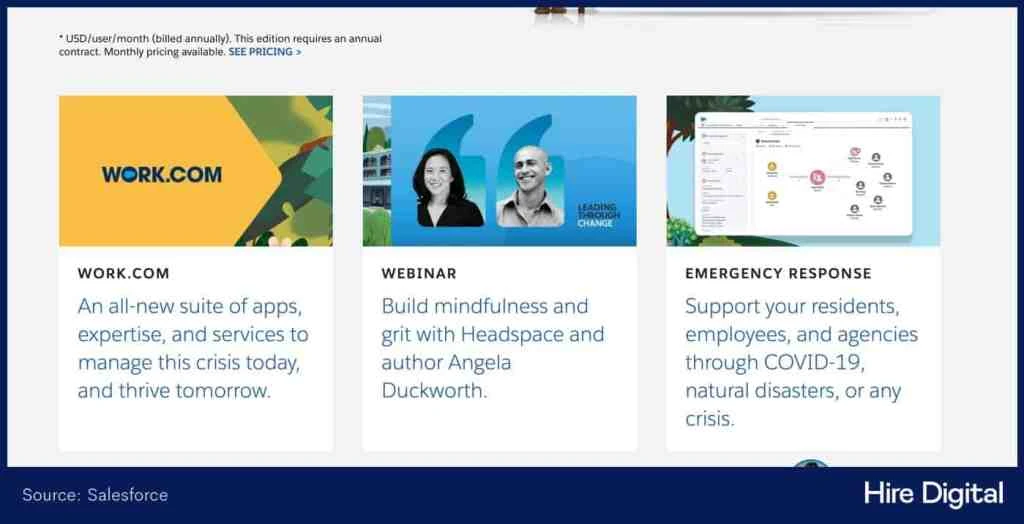
US website


Salesforce Canadian website below-the-fold content.
Personalized product recommendations
One of the most frequent types of website content personalization is product recommendations based on previous searches or purchases.
One of the popular examples are streaming platforms like Spotify or Netflix. The latter not only recommends shows to watch on the platform based on your viewing history but also sends emails suggesting shows “you might like” based on your preferences, encouraging you to log back into the platform.
Another benefit of this kind of personalization is emails like this let you further segment your audience based on clicked links and refine your communication even more.
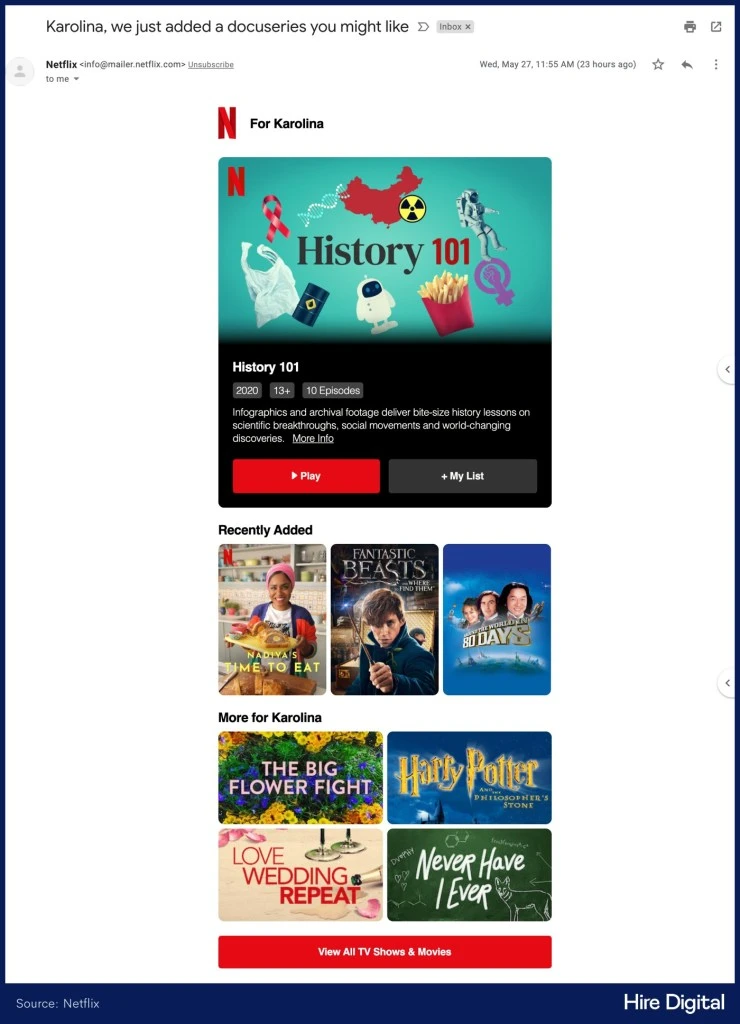
Netflix personalized email marketing.
Personalized automated emails based on demographic data
Your email list is a goldmine of data to use for personalized email marketing – although a lot of brands still decide to send everyone the same email. You can segment your emails based both on your audience’s demographics and behavior (like the links they click or products they buy from you), creating individual marketing automation workflows.
One of my favorite examples of using your subscriber demographics in automated email series – and probably a newsletter I’ve been longest subscribed to – is Baby Center. Since the moment you sign up (possibly when you’re pregnant), they keep sending you weekly emails with useful content. And then, when the kid is born, you can adjust the birth date and keep getting weekly emails about your child’s development milestones, health-related talking points, etc.
Although the content is not triggered by subscriber actions, it’s perfectly tailored to the kid’s age and surprisingly accurate most of the time, making you feel like the emails are actually sent to you (which is what personalization is all about.)

Baby Center personalized email newsletter.
Search-based personalization in emails and retargeting ads
If you’ve ever searched for a travel destination or wanted to book a hotel, these emails have likely made their way into your inbox. Sites like Booking.com or Trip Advisor have sophisticated marketing automation engines that recommend places based on your recent searches, urging you to make your purchase decision.
These highly personalized triggered emails keep the brands in front of their audiences and have a high potential of converting those customers who haven’t made up their minds to buy. If you combine them with retargeting ads based on the same criteria (or displaying products to cross-sell), you get a multi-channel tool maximizing your chances for conversion.
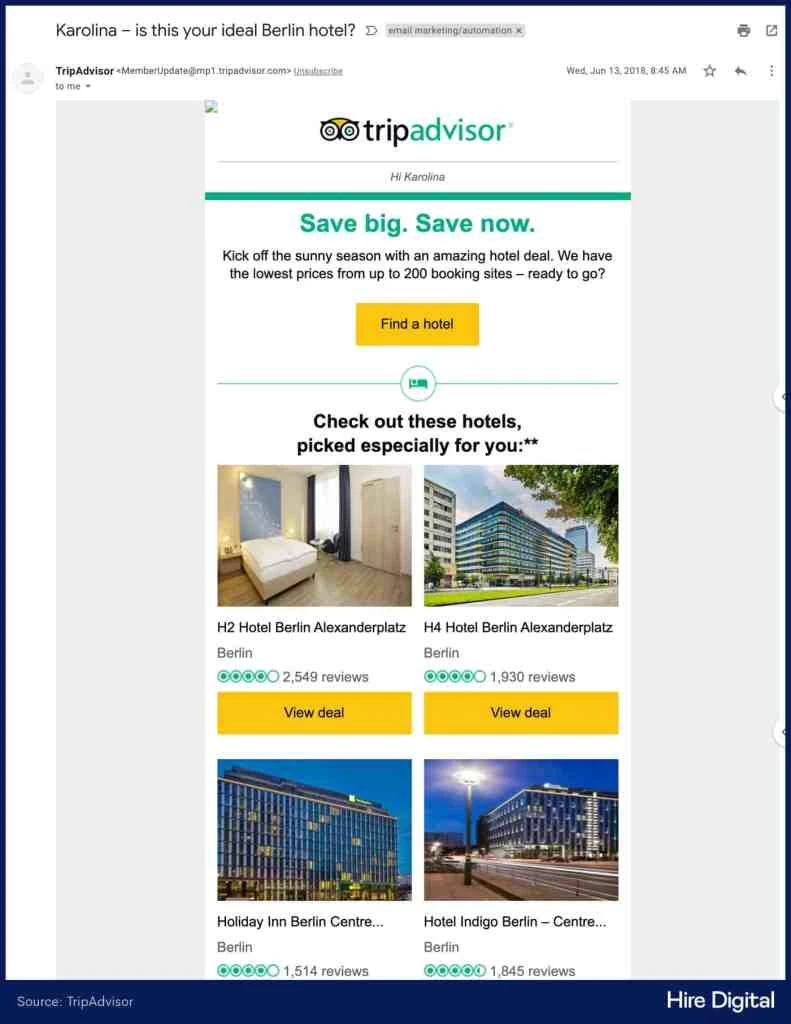
TripAdvisor personalized email newsletter.
Dynamic content in emails
An example of a fun way to play with personalized email marketing is Really Good Emails weekly newsletter. They’ve recently used dynamic content to display different images for their subscribers.
And since they’re email geeks writing to other email geeks, they’re actually describing the process in the email itself, which makes it transparent – but still effective. For one, the email sparked organic conversations in social media, with people tweeting the band names they got, creating additional buzz for the brand.
What they used for this was Nifty Images – a service that lets you dynamically display personalized images in emails based on the contact’s profile info. Other available personalization features are, for example, maps included in emails with the contact’s location or real-time weather forecasts.
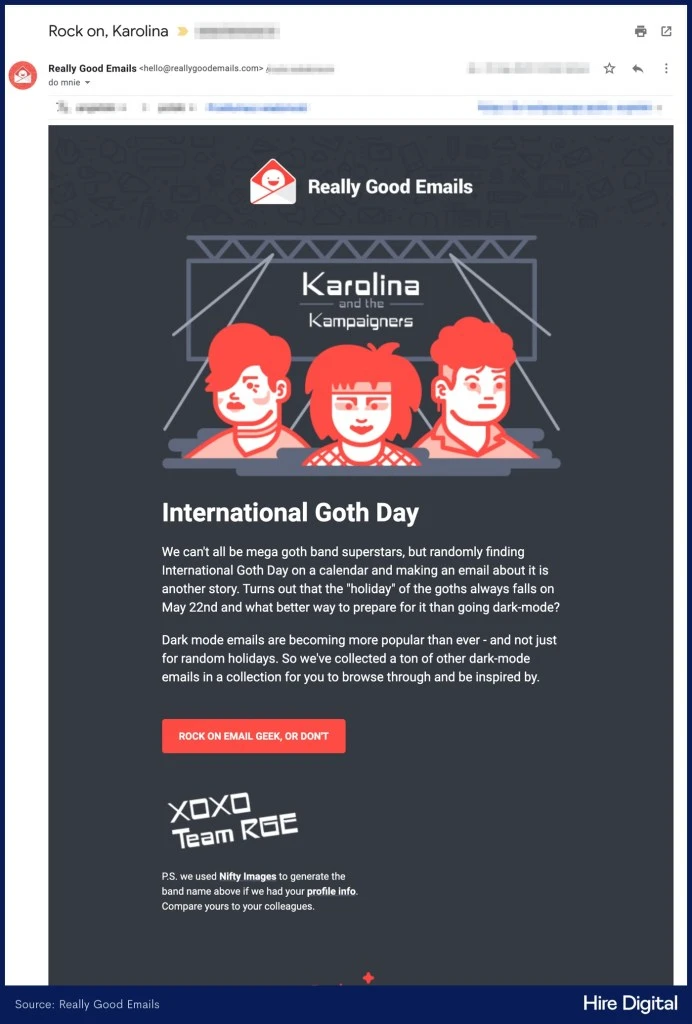
Really Good Emails personalized email marketing.
Personalized digital marketing through programmatic audio advertising
Programmatic advertising has been offering brands multiple targeting options for some time now, but a recent development in this area is programmatic audio. There are platforms that let brands target personalized digital audio commercials based on the same criteria as display ads, and play them to individuals in online radio streams or podcasts, based on their data.
An interesting example is real-time location-based audio ad targeting and retargeting, allowing advertisers to play targeted audio ads to drive traffic to physical locations like stores or restaurants.
One such campaign was done by TGI Fridays partnering with Pandora for their U.S. locations. They created a short 15-second audio spot that ran on mobile, web, tablet, connected devices, and connected cars. These targeting criteria were combined with zip code, daypart, and age to personalize the message even more.
As cited by the IAB, the results showed a 59% increase in store visits and a 20x return on digital ad spend for TGI Fridays.
Whatever the channel, personalize the whole customer experience
The tech today gives brands a lot of options to personalize and hyper-target their communication. But with all the data at our fingertips, what’s important is to make sure that communication is not only relevant but also consistent at different touchpoints. Personalizing a single email or ad won’t be that effective if they drive the customer to a generic landing page or website.
So when using personalized marketing, remember that your customer journeys have multiple touchpoints, and the more of them are personalized, the better your marketing efforts will convert in the end.
